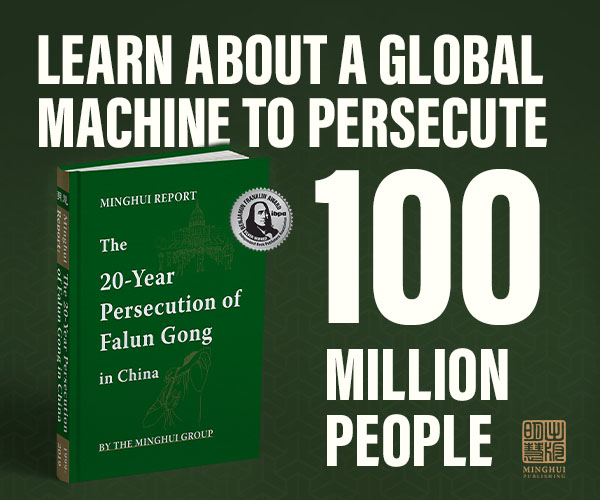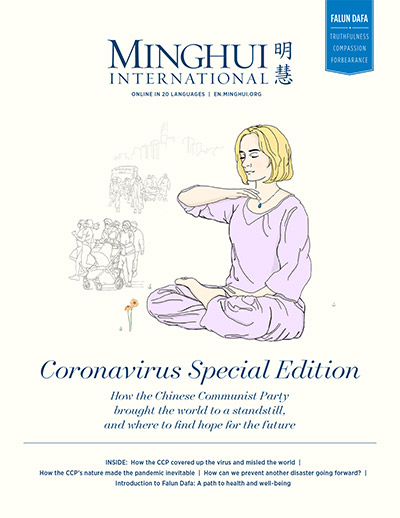(Minghui.org) How did life begin? This is a question that people have been pondering since the beginning of time. Some believe in creationism, as explained by ancient legends across cultures. Some dismiss creationism, citing scientific theories such as the Big Bang theory.
When looking into this topic further, however, one may find that creationism and the Big Bang theory share many similarities.
Origin of the Universe
Before the 1900s, scientists believed that the universe had existed forever. Later on, the Big Bang theory was proposed to explain more recent scientific discoveries. In 1989, NASA launched the satellite Cosmic Background Explorer (COBE), which confirmed the cosmic microwave background radiation (CMB) as well as its tiny fluctuation. [1]
Because of his contribution in this field, George Smoot from MIT won the Nobel Prize in physics in 2006. In Wrinkles in Time, a book on cosmology about this discovery, he wrote, “There is no doubt that a parallel exists between the big bang as an event and the Christian notion of creation from nothing.” [2]
Citing a remark from Pope Pius XII in 1951, he added, “Scientists are beginning to find the fingers of God in the creation of the universe.”
A Daunting Task
To some degree, the Big Bang can be interpreted as a theory to refute creationism, the tradition of the latter ranging from God in Western culture to Pan Gu (creator of the world) and Nuwa (creator of mankind) in Chinese culture.
But in order for the Big Bang theory to hold true and create life, everything had to have been aligned perfectly. More specifically, the model posits that our entire universe had to start from a dense matter with the size of about 1.6X10-35meters, at a temperature of about 1032 degrees, in a time frame of 10-43 seconds. It maintains that the four fundamental forces — the electromagnetic force, the strong nuclear force, the weak nuclear force, and the gravitational force, were unified as one.
This is so different from most advanced modern physics that one has to accept it with a religious faith. In fact, the process had to be designed so delicately and precisely that, “If the rate of expansion one second after the big bang had been smaller by even one part in a hundred thousand million million, the universe would have collapsed before it ever reached its present size,” wrote Stephen Hawking in The Illustrated Brief History of Time. [3]
To create life, conditions of the solar system and planets have to be perfect. For example, without oxygen, man could not breathe. Other elements, such as hydrogen, nitrogen, sodium, carbon, calcium, and phosphorous are also important for life, explains Hugh Ross in The Creator and the Cosmos. [4] In addition, the size, relative distance, and chemical composition of Earth, the sun, and the moon also need to be perfect. Plus, other parameters also need to be in optimal condition; otherwise, life cannot exist.
“The laws of science, as we know them at present, contain many fundamental numbers, like the electric charge of the electron and the ratio of the masses of the proton and the electron,” wrote Hawking in A Brief History of Time, [5] “The remarkable fact is that the values of these numbers seem to have been very finely adjusted to make possible the development of life.”
“For example, if the electric charge of the electron had been only slightly different, stars either would have been unable to burn hydrogen and helium, or else they would not have exploded,” he added.
According to astronomer Ross, with so many uncertainties, the chance of randomly creating a livable planet is extremely low. In fact, the chance is about one out of 10144 (trillion trillion trillion trillion trillion trillion trillion trillion trillion trillion trillion trillion). [6]
Even Albert Einstein agreed. He called the genius behind the universe “an intelligence of such superiority that, compared with it, all the systematic thinking and acting of human beings is an utterly insignificant reflection.” [7]
The Unnatural Complexity of DNA
As a large biological molecule, DNA passes on the genetic information, directs biological development, and maintains life functions.
While a computer stores information in a binary system with only the digits 0 and 1, the DNA molecule has four base pairs (A, T, G, and C), leading to an extremely high storage density. In fact, DNA, of the size of a piece of candy, could store all the movies in the entire world. “DNA is like a computer program but far, far more advanced than any software ever created,” wrote Bill Gates in The Road Ahead. [8]
Even the most loyal evolutionists believe that the complexity of DNA cannot be explained. “An honest man, armed with all the knowledge available to us now, could only state in some senses, the origin of life appears at the moment to be almost a miracle, so many are the conditions which would have had to have been satisfied to get it going,” wrote Francis Crick, one of the Nobel laureates who uncovered the structure of DNA, in Life Itself. [9]
Antony Flew, British philosopher and a well-known advocate of atheism, had openly criticized religion and the idea of life after death. But after witnessing an overwhelming amount of scientific evidence, he changed his position and came to believe in the existence of an intelligent Creator of the universe.
“I now believe there is a God...I now think it [the evidence] does point to a creative Intelligence almost entirely because of the DNA investigations,” he said. “What I think the DNA material has done is that it has shown, by the almost unbelievable complexity of the arrangements which are needed to produce life, that intelligence must have been involved in getting these extraordinarily diverse elements to work together.”
Concluding Remarks
This article reviewed discoveries in astronomy and molecular biology that are beyond a simple scientific explanation.
There are many more miracles that cannot be explained by science. For instance, many practitioners of Falun Dafa, a meditation system based on the principles of Truthfulness-Compassion-Forbearance, have seen their illnesses disappear without any medical intervention. Many non-practitioners have also been blessed by simply identifying with Falun Dafa’s principles. Amid the pandemic, reciting the words “Falun Dafa is good” has enabled many patients to recover from the coronavirus infection.
Where did life come from and where are we heading? This is a question that humankind has been pondering for thousands of years. But nowadays the answer might be closer than we thought.
References:
[1] George Smoot and Keay Davidson, Wrinkles in Time (New York: Avon, 1993), 241.[2] George Smoot and Keay Davidson, Wrinkles in Time (New York: Avon, 1993), 17.[3] Stephen Hawking, The Illustrated A Brief History of Time (New York: Bantam, 1996), 156.[4] Hugh Ross, The Creator and the Cosmos (3rd ed.) (Colorado Springs, CO: NavPress, 2001), 224.[5] Stephen Hawking, A Brief History of Time (New York: Bantam, 1990), 125.[6] Hugh Ross, The Creator and the Cosmos (Colorado Springs, CO: NavPress, 2001), 198.[7] Albert Einstein, Ideas and Opinions - The World As I See It (New York: Bonanza, 1931), 40.[8] Bill Gates, The Road Ahead (New York: Viking, 1995), 188.[9] Francis Crick, Life Itself (New York: Simon & Schuster, 1981), 88.[10] Quoted in Gary Habermas, “My Pilgrimage from Atheism to Theism”: Interview with Antony Flew, Philosophia Christi, (Winter, 2005).
Views expressed in this article represent the author's own opinions or understandings. All content published on this website are copyrighted by Minghui.org. Minghui will produce compilations of its online content regularly and on special occasions.
Category: Perspective










